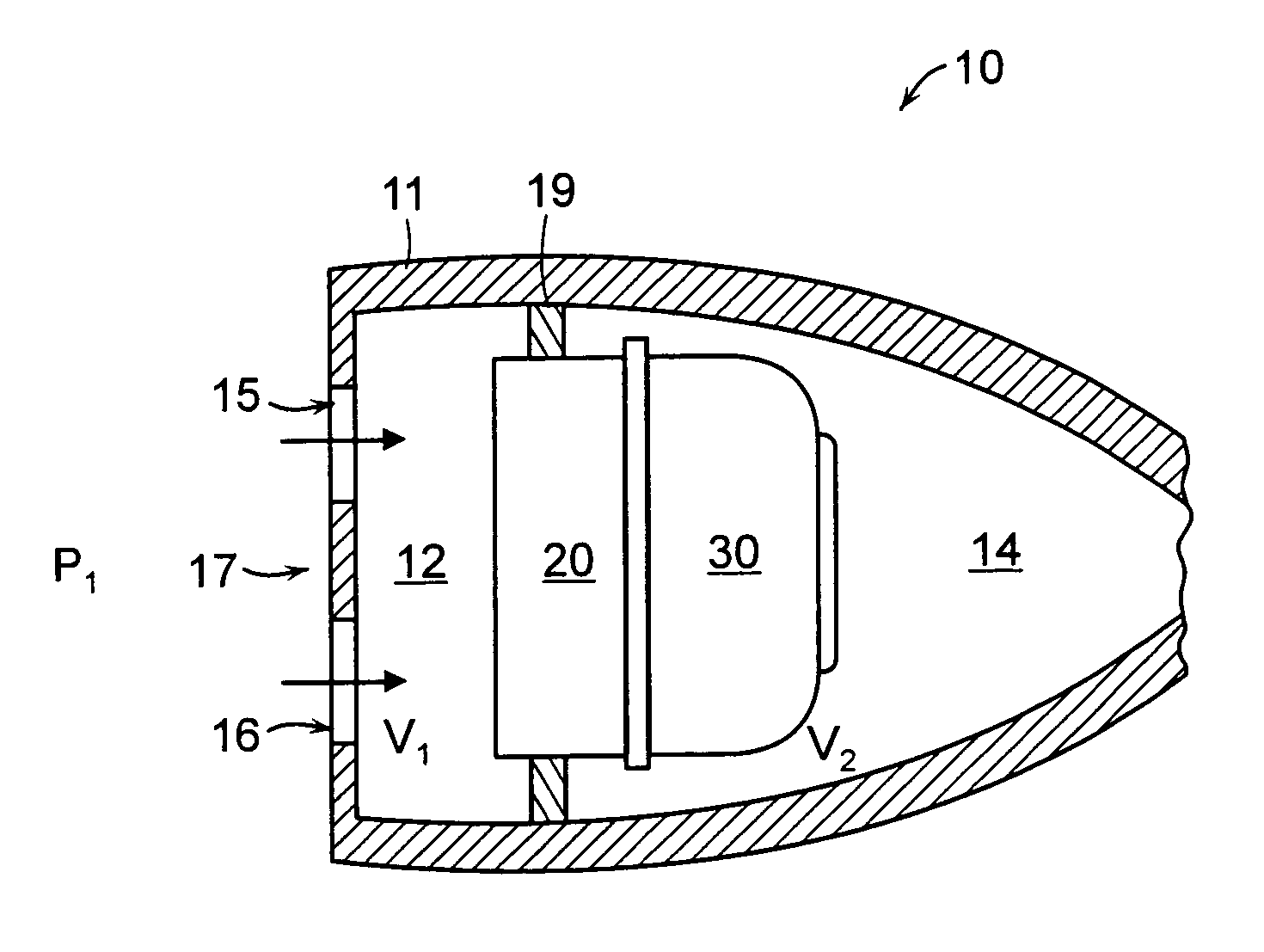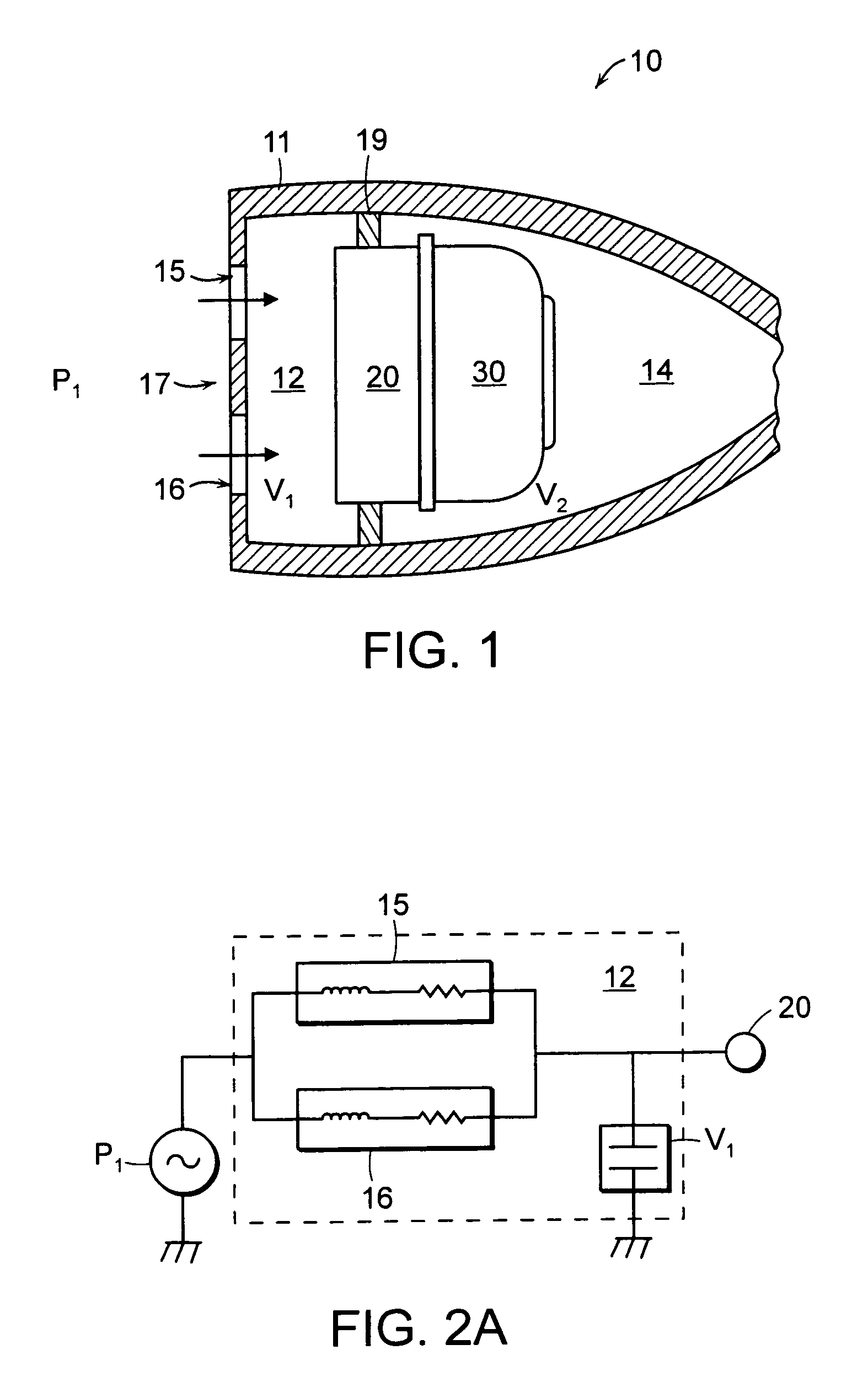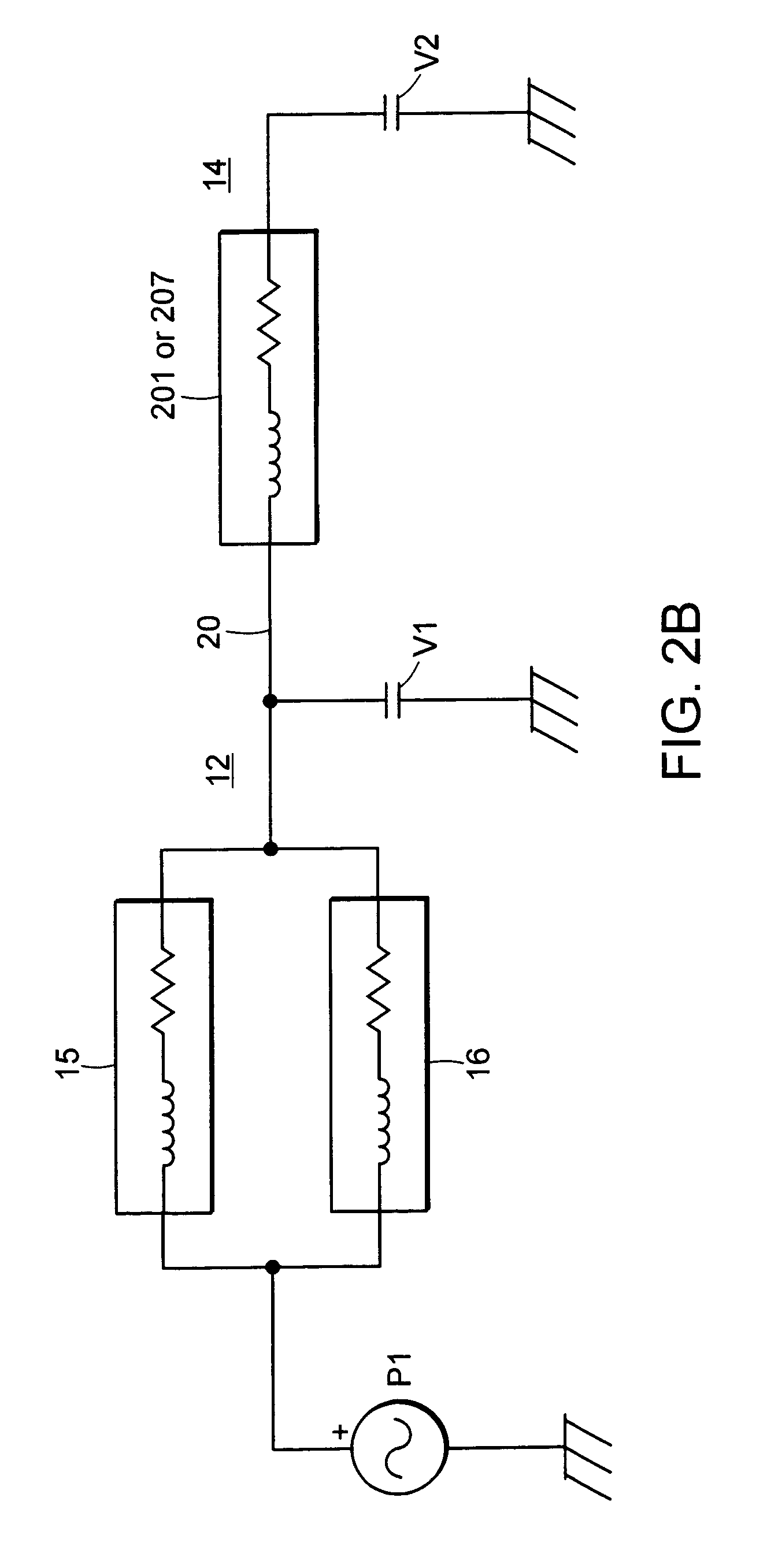Hearing aid with tuned microphone cavity
a microphone cavity and hearing aid technology, applied in the field of hearing aids, can solve the problems of difficulty in hearing soft sounds at high audible frequencies, poor sound quality, and high cost of many components of these devices, such as signal processing circuitry, and achieve the effect of generalized cavity geometry control
- Summary
- Abstract
- Description
- Claims
- Application Information
AI Technical Summary
Benefits of technology
Problems solved by technology
Method used
Image
Examples
Embodiment Construction
[0027]A description of preferred embodiments of the invention follows.
[0028]A hearing aid 10 having a tuned resonant cavity 12 is shown in FIG. 1. As shown in this figure, the hearing aid 10 includes a hearing aid shell 11 that contains various hearing aid components, such as a microphone 20 and battery 30, as is known in the art. The hearing aid shell 11 includes a face plate 17 located at the front end of the device. The face plate 17 includes a pair of openings 15, 16 that allow air and sound into the tuned resonant cavity 12. The resonant cavity 12 is tuned by selecting one or more parameters of the cavity, including the number, shapes and sizes of the openings 15, 16, and the shape and volume of the chamber 12. Additionally, the cavity can be tuned by selecting the number, shapes and sizes of any opening(s) between the chamber 12 and the microphone 20. By adjusting these parameters, the cavity 12 can effectively “tune” the incident sound wave signal, P1, to provide a desired fr...
PUM
 Login to View More
Login to View More Abstract
Description
Claims
Application Information
 Login to View More
Login to View More - R&D
- Intellectual Property
- Life Sciences
- Materials
- Tech Scout
- Unparalleled Data Quality
- Higher Quality Content
- 60% Fewer Hallucinations
Browse by: Latest US Patents, China's latest patents, Technical Efficacy Thesaurus, Application Domain, Technology Topic, Popular Technical Reports.
© 2025 PatSnap. All rights reserved.Legal|Privacy policy|Modern Slavery Act Transparency Statement|Sitemap|About US| Contact US: help@patsnap.com



